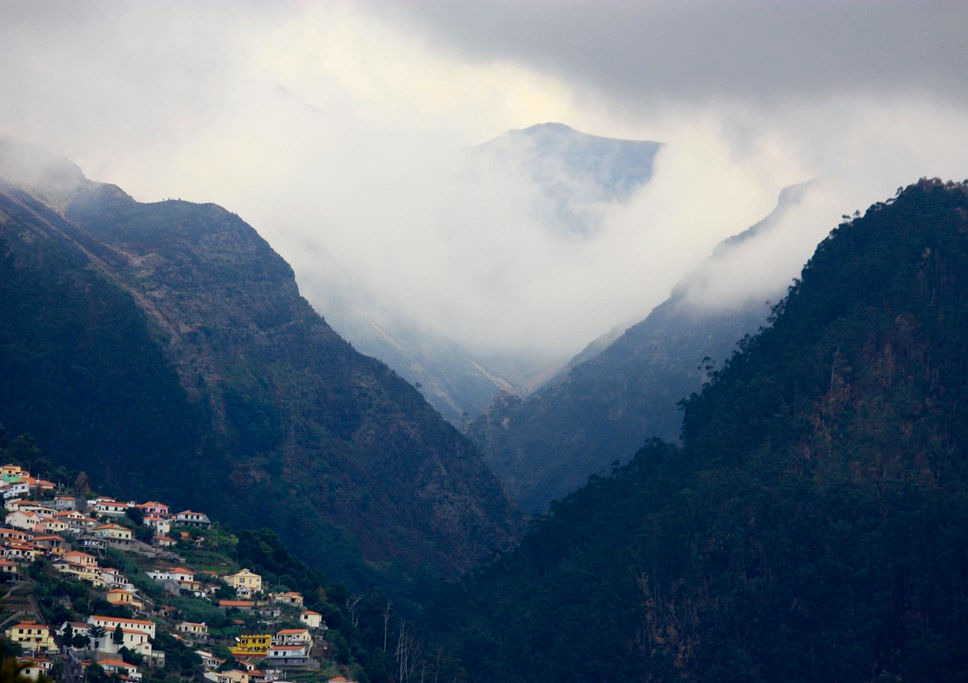The Madeira archipelago has a humid subtropical climate. To put it simply: the weather is fine almost all year round: temperatures rarely drop below 10°C (except in the high mountains) with an average of 18°C: 15°C in winter and 23°C in summer. The rainfall allows nature to be particularly green, which is why Madeira is called the island of flowers, the garden of the Atlantic, or Madeira: eternal spring.
In order to understand how the climate works in Madeira, it is necessary to situate the island of Madeira. In the middle of the Atlantic Ocean, the gulf stream has a great influence on the climate. It is also just north of the Tropic of Cancer, which has a great influence on the winds, more precisely the trade winds.
What is a subtropical climate?
A humid subtropical climate is a temperate climate zone characterized by hot, humid summers and short, mild winters. Several classifications exist and differ somewhat according to climatologists (among them: Köppen - Leslie Holdridge...). A subtropical climate could be defined with an average annual temperature between 16 and 24°C, with at least 8 months above 10 degrees. This climate is halfway between continental and tropical.
The gulf stream
Madeira is directly impacted by the gulf stream: this warm water current that starts in the West Indies and transfers its heat to part of Europe, but above all to the entire north-western coast of Africa through the Canary Current, which therefore includes the Madeira archipelago, the Azores and the Canary Islands. The current thus forms a loop and leaves again on the Florida side, pushed by the equatorial current. It almost "keeps" the warm temperatures, unlike the North Atlantic drifting currents which are lost along Europe and become cold currents.

It is therefore thanks to the gulf stream current, which crosses the island from north to south as shown in the diagram above, that the ocean temperatures oscillate between 17 and 23° all year round. Ideal for swimming despite the waves. The currents are quite strong and this is what makes Madeira an excellent surfing spot!
Winds
The predominant wind in Madeira is the North-East wind. This is the North-East trade wind: The phenomenon of air masses carries the warm winds from the Tropic of Cancer northwards towards the equator. They then rise to more than 10 km in altitude and return northwards to cool, forming a North-South loop. From October to March, it is more of a westerly wind: it is the Azores anticyclone, which brings precipitation to the island (which also explains why the eastern part of the island, the tip of São Lourenço, is more deserted).

Meteorology is a complex science and there are many phenomena that can affect Madeira. For example, in summer the wind can come from the North West, more precisely from the Sahara, and bring heat to Madeira Island.
Generally speaking, the wind is stronger in the north of the island: the mountains rising above 1400 metres block the gusts and clouds. They protect the south from precipitation, humidity and wind in general.


This can be seen on the aerial image of the islands of Madeira (top of the image) and the Canaries (bottom): the wind pushes the clouds in a south-westerly direction, and the impact of the islands is to block and literally swirl the clouds. It is therefore particularly common to find certain areas of Madeira in fog, such as the Fanal forest, famous for its "enchanting" photos. It is also common to find yourself above the "sea of clouds" when climbing the picos at an altitude of over 1500 metres.
Madeira's microclimates
A large part of the south of the island, as well as the extreme east (São Lourenço point), are low rainfall areas: between 600 and 1000 mm per year. The weather in Funchal and in villages such as Ribeira Brava, Calheta, or Ponta do Sol (which means Point of the Sun ;)) is almost year-round.
On the other hand, the mountainous regions in the heart of the island are particularly subject to rainfall: nearly 2,500 to 3,000 mm per year around the picos do Ariero in the central east, and Encumeada in the central west. This makes it easier to understand the importance of the levadas which allow water to be transported to the coasts and crops.
The north of the island as a whole is also more subject to rainfall, between 1400 and 2000 mm per year. The average temperature is a little lower than in the south, with the exception of Ponta Delgada which also has its own microclimate. The northern regions of the island are greener, lush and wilder.
When to go to Madeira?
Once you understand how Madeira's climate works, you also understand that you can actually go to the island all year round. Depending on the weather conditions, you can choose a different activity or place to visit. Madeira is sometimes the 4 seasons in the same day. Winter in the picos and the summer sun by the sea. If it's raining in the north, just get in your car and visit the south or east of the island! It's up to you to find your ideal time to go to Madeira!
